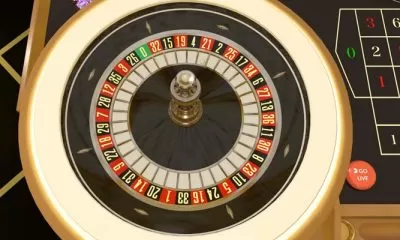Casino
Master Rummy 500: Rules, Strategies, and How to Play [rum, score, card, strategy, play, bonus, player, master]
Published
8 months agoon
By
Sam Jonson
Rummy 500, sometimes referred to as the 500 Rum card game, is a well-liked variation of the traditional rummy ruleset. This variant is highly adaptable, accommodating various numbers of players, and boasts a straightforward set of rules. Its similarity to Canasta is noteworthy.
Key Elements of Rummy 500
The game of Rummy 500 consists of these basic elements –
1. Cards
Rummy 500 is typically played with a standard 52-card deck. In some variations, multiple decks may be combined.
2. Jokers
Some versions of Rummy 500 incorporate joker cards, which are used as wild cards that can substitute for any other card in forming sets or runs.
3. Players
The game can be played by two or more players, with the number of participants not strictly fixed. However, it is often played with two to six players.
4. Objective
The primary goal of Rummy 500 is to score points by forming sets (groups of cards with the same rank) and runs (sequences of cards in the same suit).
5. Initial Dealing
At the start of the game, each player is dealt a specific number of cards, usually ten.
6. Draw and Discard
Players take turns drawing cards from the deck or the discard pile and then discarding a card. The aim is to create valid sets and runs while minimizing the number of cards in their hand.
7. Scoring
Rummy points are awarded for valid combinations made during play. The specific scoring rules can vary but often include points for sets, runs, and other special combinations.
8. Going Out
To win a hand of Rummy 500, a player must “go out” by forming valid combinations and then discarding their last card. This player earns additional points for going out.
9. Game Variation
Rummy 500 allows for flexibility in rules and variations, including the use of jokers, the number of cards dealt, and scoring methods.
Ace High or Low
Aces can be high or low.
Restricted Pile Draw
A player can pick up cards from the table under different circumstances
- Must meld if not top
- Must new meld if not top
- Must meld
- Must new meld
- Disabled
Five Points under Ten
Cards under Ten are all worth 5 points
Multiple Melds
Players can lay down multiple melds in one turn.
Meld before Layoff
Players must have laid down a set or run before they can lay off cards.
Jokers
The decks can contain 2 or 4 Jokers, or Jokers can be disabled
10. Game Winner
Rummy 500 is usually played over multiple hands or rounds. The player with the highest total score at the end of the predetermined number of rounds wins the game.
The above-mentioned elements collectively make up the foundation of the Rummy 500 card game. The game’s rules can be adjusted to accommodate the preferences and skill levels of the players, providing an adaptable and enjoyable card-playing experience.
How to Play Rummy 500?
This card game is typically played by two to six players using a standard 52-card deck (or multiple decks if desired). It is played over a series of hands, and the objective is to score points by forming sets and runs with your cards. A step-by-step guide on how to play Rummy 500 is given below.
Setup
1. Deck
Use a standard 52-card deck for two to four players. If playing with more than four players, combine two decks shuffled together.
2. Jokers
If you wish to include jokers as wild cards, use them. Typically, two jokers are used, but you can adjust this number to your preference.
3. Players
Gather two to six players.
Dealing
- Decide who goes first. This player becomes the dealer for the first hand at the rummy table.
- The dealer shuffles the deck and offers it to the player on their right to cut.
- After cutting, the dealer deals ten cards to each player, one at a time, starting with the player to their left. In the following hands, the dealer rotates clockwise.
Objective
The goal of playing rummy 500 is to score points by forming valid combinations of cards, such as sets (groups of cards with the same rank) and runs (sequences of cards in the same suit).
Gameplay
- On a player’s turn, they start by drawing one card from either the stock (face-down pile) or the discard pile (face-up pile).
- After players drawing the cards, every player can choose to form valid combinations with their cards and then discard one card onto the discard pile.
- Valid combinations include sets (e.g., 7 spade, 7 diamond, 7 club) and runs (e.g., 3 spade, 4 spade, 5 spade). Jokers can be used as wild cards to substitute for any other card in a combination.
- A player must have a valid combination with a value of at least 50 points in their initial meld. This rule is only applicable to the first meld in the game.
- Players can extend existing combinations on the table with additional cards on their turns.
- A player ends their turn by discarding a card onto the discard pile.
Scoring Rummy Rule
Scoring in Rummy 500 is a fundamental aspect of the game, as it determines the winner of each hand and the overall winner of the game. A breakdown of scoring and points in Rummy 500 is given below.
Card Values
- Numbered rummy cards (2-10): Face value (e.g., a 4 is worth 4 points).
- Face cards (Jacks, Queens, Kings): 10 points each.
- Aces: 1 point each.
Initial Meld Requirement
In the first meld of a hand, a player must have a valid combination of cards with a total value of at least 50 points.
Points for Valid Combinations
- Sets (groups of cards with the same rank): Points equal to the total face value of the cards in the set.
- Runs (sequences of cards in the same suit): Points equal to the total face value of the cards in the run.
- Jokers: Jokers can be used as wild cards and substitute for any other card in a combination. They have the same point value as the card they represent.
Penalties
- Players who do not meet the initial meld requirement during their first meld in a hand receive a penalty of minus 50 points.
- Unmelded cards (cards that a player has not used in valid combinations) are counted against the player’s score at the end of the hand.
Ending the Hand
When a player goes out by forming valid combinations with all of their cards and discards their last card, they earn additional points.
Points for Going Out
The player who goes out first in a hand earns additional points based on the cards left in their opponents’ hands –
- Numbered cards and face cards left in opponents’ hands: Face value.
- Aces left in opponents’ hands: 1 point each.
- Jokers left in opponents’ hands: 15 points each.
Winning the Game
Rummy 500 is played over several hands, and the player with the highest total score at the end of the predetermined number of rounds wins the game.
Remember that the specific rules and scoring systems may vary among different groups of players, so it’s essential to agree on the rules before starting a game of Rummy 500. Enjoy the game!
Scoring adds an element of strategy to the game, as players must balance forming valid combinations with maximizing their point total to win each hand and, ultimately, the game.
Rummy 500 Winning Strategies
1. Starting Hand Assessment
Evaluate your initial hand carefully. Look for potential combinations and runs to meld. If your starting hand has a good foundation for melds, consider keeping it intact.
2. Focus on Melding Early
Try to achieve your initial meld as quickly as possible, as you’ll earn bonus points for going out first. Look for sets and runs to meld, keeping in mind that you need a total value of at least 50 points in your initial meld.
3. Flexible Use of Jokers
If jokers are in play, use them strategically. Jokers can be invaluable for completing sets or runs, so try to reserve them for situations where they have the most impact.
4. Minimize Deadwood
Avoid accumulating high-value cards in your hand that you cannot easily meld. High-value cards left in your hand at the end of the hand will count against you.
5. Watch Opponents’ Discards
Pay attention to the cards your opponents are discarding. This can provide valuable information about their hands and help you determine which cards are safe to discard.
6. Use the Draw Pile and Discard Pile Wisely
When drawing a card, consider whether you can immediately use it to form a valid combination. Similarly, when discarding a card, think about whether it might benefit an opponent’s hand.
7. Observe Opponents’ Melds
Keep track of the combinations and runs your opponents are melding. This can help you avoid discarding cards that might complete their melds.
8. Calculate Probabilities
As the game progresses, calculate the probabilities of drawing specific cards you need to complete your melds. This can help you decide which cards to discard and which to keep.
9. Bluff and Mislead 500 Rummy Rules
Occasionally, consider making plays that may confuse your opponents. This could involve discarding a card that doesn’t necessarily help your hand but makes your opponents unsure of your strategy.
10. Adapt to the Game Situation
Rummy 500 requires adaptability. Be prepared to change your strategy based on the cards you draw and the actions of your opponents.
11. Keep Track of Scores
Maintain awareness of the overall score and the progress of the game. If you’re leading, you might adopt a more conservative strategy, whereas if you’re behind, you might take more risks to catch up.
12. Practice Patience
Don’t rush to discard high-value cards. Sometimes, it’s better to hold onto them until you can form a rummy card order.
Rummy 500 is a dynamic game, and strategies can vary depending on the specific circumstances of each hand. Practice and experience will help refine your skills and make better decisions as you play!
You may like
-
High Low Game: How and Why to Play, Variations, and Strategies
-
Live Speed Baccarat: Game Rules, How to Play, and Strategies
-
A Comprehensive Guide to Play Poker Online with Friends
-
How to Play Roulette: Everything You Need to Know about Casino Roulette Game
-
Play Online Roulette Successfully: 6 Proven Strategies to Help You Win
-
Learn How to Play 3 Card Brag














